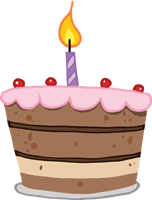Semicolon
Rules and Examples
 The semicolon is a form of punctuation in the English language. The
semicolon ( ; ) looks like a period ( . ) over a comma ( , ).
The semicolon is a form of punctuation in the English language. The
semicolon ( ; ) looks like a period ( . ) over a comma ( , ).Click Here for Step-by-Step Rules, Stories and Exercises to Practice All English Tenses
How to use the semicolon
There are three uses of the semicolon.1. Use a semicolon to connect (put together) two related, or similar, sentences.
We connect the sentences with a semicolon to eliminate the pause between them.Example without a semicolon:
- My shirt is green. My brother's shirt is blue.
Example with a semicolon:
- My shirt is green; my brother's is blue.
We can put these two sentences together with a semicolon because they are similar. They are both about the colors of the shirts.
Here are some more examples.
Example without a semicolon:
- I have my own bed. The cat sleeps on the pillow.
- I have my own bed; the cat sleeps on the pillow.
Incorrect:
- Tim likes cats; Bill went to the park.


2. Use a semicolon to join two related,
or similar, sentences when using a conjunctive adverb.
A conjunctive adverb is a connecting word such as:- also
- besides
- finally
- similarly
- likewise
- furthermore
- however
- next
- then
- therefore
- meanwhile
- We will drive to school; then we will go to the museum.
- I ate all of my vegetables; therefore, I should get dessert.

3. Use a semicolon to connect items in a
list if there are already commas in the sentence. Use this when listing
dates, locations, names and descriptions.
Example with names and descriptions:Correct:
- My favorite teachers are Mrs. White, my math teacher; Mrs. Smith, my reading teacher; and Mr. Johnson, my music teacher.
- My favorite teachers are Mrs. White, my math teacher, Mrs. Smith, my reading teacher, and Mr. Johnson, my music teacher.
Example with dates:
Correct:
- Our birthdays are July 11, 2000; February 12, 2007; and April 9, 2007.
- Our birthdays are July 11, 2000, February 12, 2007, and April 9, 2007.
Example with locations:
Correct:
- I have lived in Paris, France; London, England; and Los Angeles, California.
- I have lived in Paris, France, London, England, and Los Angeles, California.
Tips for Using the Semicolon
1) Do not capitalize the word following the semicolon, unless it is a proper noun.
A noun names a person place or thing.Examples of nouns:
- restaurant
- boy
- school
- woman
Examples of proper nouns:
- McDonald's
- Tom
- Kansas University
- This summer my father traveled to Columbus, Ohio; Miami, Florida; and Atlanta, Georgia.
Incorrect:
- Some people like apple pie; Cherry pie is my favorite.
2) Do not use a semicolon with conjunctions.
Conjunctions are combining words like and, but, or, for, so, and yet.Use a comma with conjunctions.
Incorrect:
- My favorite color is red; but my bike is green.
- My favorite color is red, but my bike is green.
- My sister was sleeping; so I turned off the lights.
- My sister was sleeping, so I turned off the lights.
These were the uses of the semicolon. Now that you know them, it is time to practice! Read and do exercises.
Get Updates, Special Offers, and English Resources
Download your FREE GIFT (the first two chapters of
English Short Stories Book and Workbook)
as soon as you join!

By submitting your email, you consent to receiving updates and newsletters from us and to the sharing of your personal data with third parties for the purposes of sending you communications. We will not spam you. You can unsubscribe at any time. For more information, please see our privacy policy.






